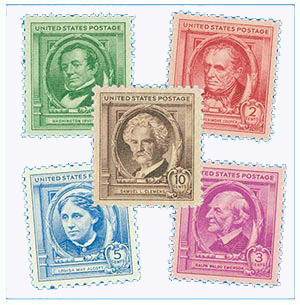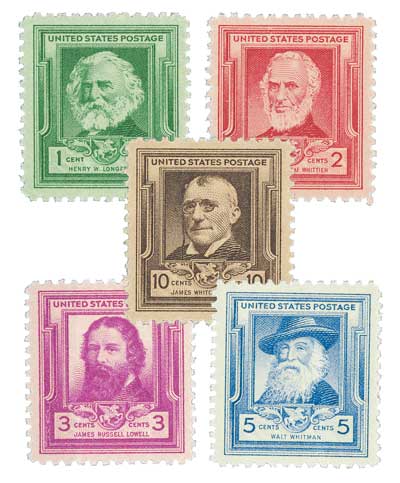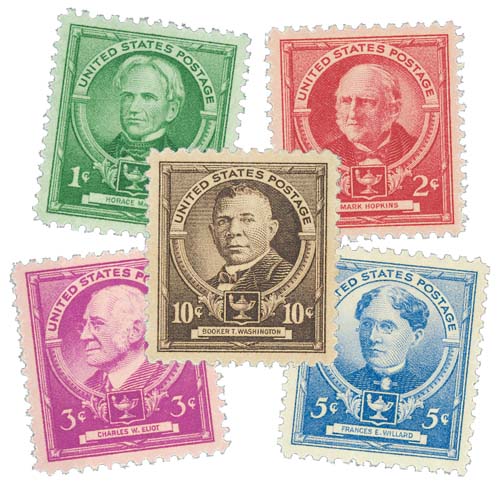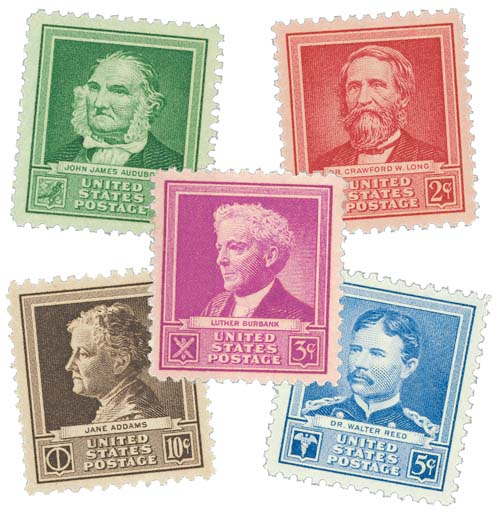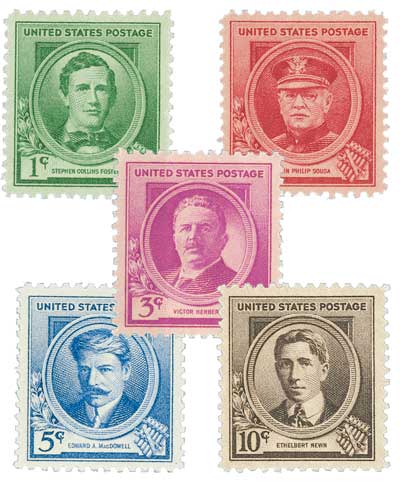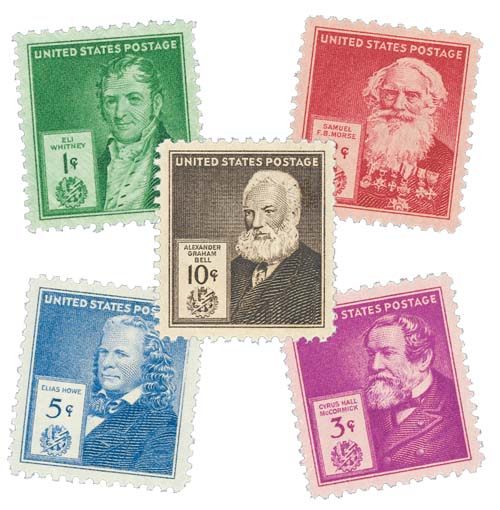
# 869-73 - 1940 American Educators, collection of 5 stamps
Is Your Famous Americans Series Missing the American Educators?
American Educators:
Horace Man (1796-1859) – helped establish the American elementary school system
Mark Hopkins (1802-1887) – one of the first teachers to encourage students to question what they’re taught
Charles William Elliot (1834-1926) – Harvard’s longest-serving president; helped establish it as one of nation’s finest universities
Frances Elizabeth Willard (1839-1898) – helped establish Northwestern University as one of the top schools for women
Booker T. Washington (1856-1915) – ran the Tuskegee Institute, educating former slaves in industrial education
Famous Americans Series Begins
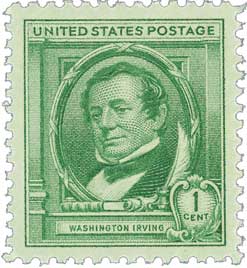
On January 29, 1940, the US Post Office Department issued the first stamps in the Famous Americans Series.
In 1938, the Post Office Department announced plans for a series of stamps recognizing 10 famous Americans and invited the public to submit recommendations. The response was so great that it was decided to increase the number from 10 to 35. This required an unexpected level of organization by the Post Office Department for this series.
Seven categories were decided upon – authors, poets, educators, scientists, composers, artists, and inventors. Each category of five has the same set of denominations – 1¢, 2¢, 3¢, 5¢, and 10¢. And each rate had a valid use. The 1¢ stamp paid for a letter that was dropped off at a post office to someone who had a box at the same office. The 2¢ was for local delivery. The 3¢ paid the normal non-local mail rate, and the 5¢ and 10¢ were used in combination for heavier letters and special rates. The denominations also shared a consistent coloring scheme: 1¢ is bright blue-green; 2¢ is rose carmine; 3¢ is bright red violet; 5¢ is ultramarine; and 10¢ is dark brown.
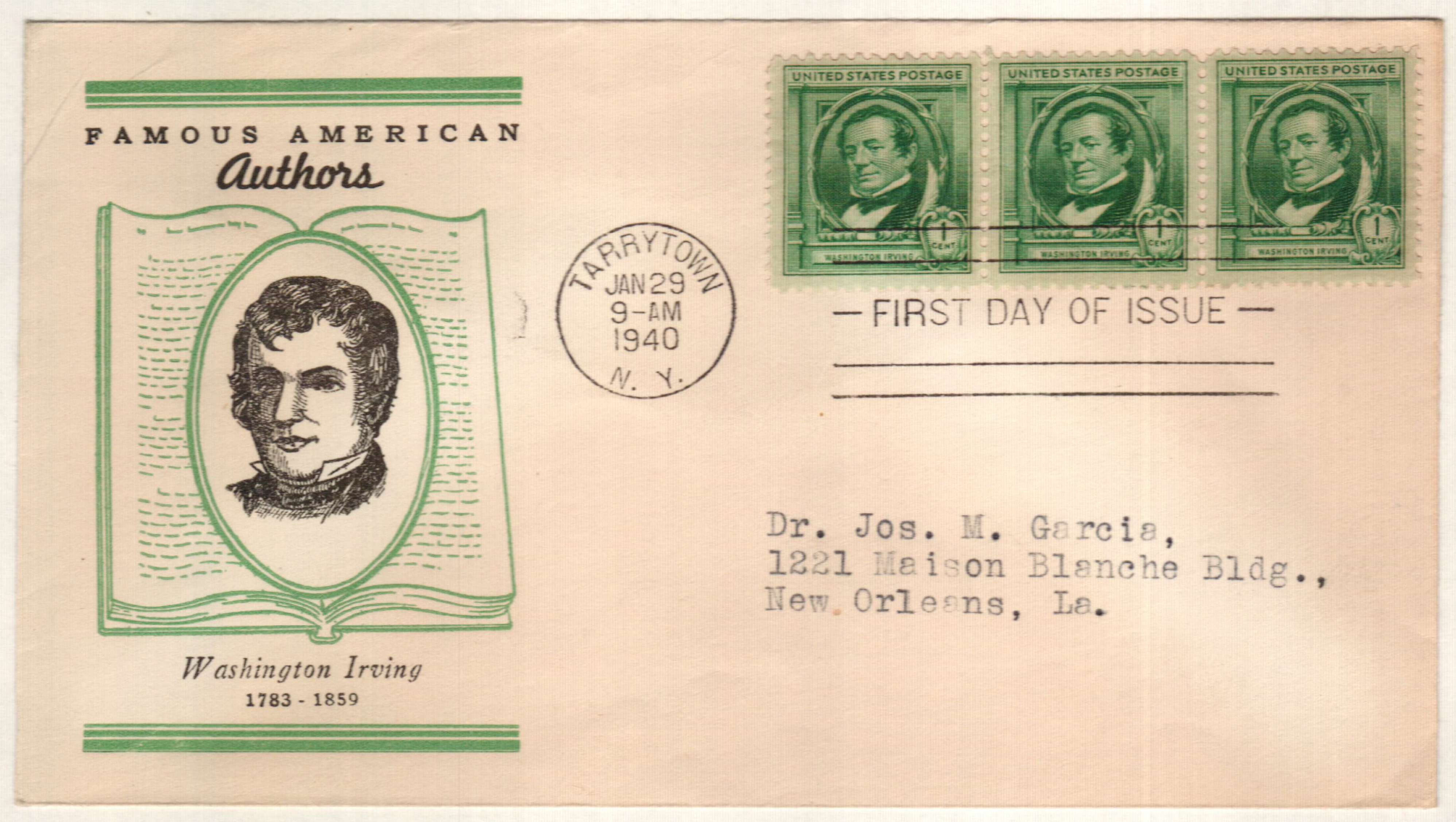
Each category has its subjects arranged with the oldest birth date going on the 1¢ stamp, down to the most recent birth date on the 10¢ stamp. Plus each category has its own dedicated symbol in the engraving – a scroll, quill pen and inkwell for authors; a winged horse (Pegasus) for poets; the “Lamp of Knowledge” for educators; laurel leaves and the pipes of the Roman god Pan for composers; and inventors had a cogwheel with uplifted wings and a lightning flash to symbolize power, flight, and electricity. The artists and the scientists have multiple symbols. Artists have a paint palette and brush (for painters), while the sculptors have a stonecutting hammer and chisel. Scientists had the classical symbol of their particular profession.
The first two stamps honoring Washington Irving and James Fenimore Cooper were issued on January 29, 1940. Subsequent stamps in the series were issued every few weeks until the final stamp, honoring Alexander Graham Bell, was issued on October 28.
Click here to get the complete set and save. Or click here for individual stamps (and covers).
Or get the Famous Americans by category:
Is Your Famous Americans Series Missing the American Educators?
American Educators:
Horace Man (1796-1859) – helped establish the American elementary school system
Mark Hopkins (1802-1887) – one of the first teachers to encourage students to question what they’re taught
Charles William Elliot (1834-1926) – Harvard’s longest-serving president; helped establish it as one of nation’s finest universities
Frances Elizabeth Willard (1839-1898) – helped establish Northwestern University as one of the top schools for women
Booker T. Washington (1856-1915) – ran the Tuskegee Institute, educating former slaves in industrial education
Famous Americans Series Begins

On January 29, 1940, the US Post Office Department issued the first stamps in the Famous Americans Series.
In 1938, the Post Office Department announced plans for a series of stamps recognizing 10 famous Americans and invited the public to submit recommendations. The response was so great that it was decided to increase the number from 10 to 35. This required an unexpected level of organization by the Post Office Department for this series.
Seven categories were decided upon – authors, poets, educators, scientists, composers, artists, and inventors. Each category of five has the same set of denominations – 1¢, 2¢, 3¢, 5¢, and 10¢. And each rate had a valid use. The 1¢ stamp paid for a letter that was dropped off at a post office to someone who had a box at the same office. The 2¢ was for local delivery. The 3¢ paid the normal non-local mail rate, and the 5¢ and 10¢ were used in combination for heavier letters and special rates. The denominations also shared a consistent coloring scheme: 1¢ is bright blue-green; 2¢ is rose carmine; 3¢ is bright red violet; 5¢ is ultramarine; and 10¢ is dark brown.

Each category has its subjects arranged with the oldest birth date going on the 1¢ stamp, down to the most recent birth date on the 10¢ stamp. Plus each category has its own dedicated symbol in the engraving – a scroll, quill pen and inkwell for authors; a winged horse (Pegasus) for poets; the “Lamp of Knowledge” for educators; laurel leaves and the pipes of the Roman god Pan for composers; and inventors had a cogwheel with uplifted wings and a lightning flash to symbolize power, flight, and electricity. The artists and the scientists have multiple symbols. Artists have a paint palette and brush (for painters), while the sculptors have a stonecutting hammer and chisel. Scientists had the classical symbol of their particular profession.
The first two stamps honoring Washington Irving and James Fenimore Cooper were issued on January 29, 1940. Subsequent stamps in the series were issued every few weeks until the final stamp, honoring Alexander Graham Bell, was issued on October 28.
Click here to get the complete set and save. Or click here for individual stamps (and covers).
Or get the Famous Americans by category:






